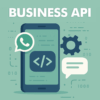Let's be clear, we're not talking about how long a message a lasciare il telefono e ad arrivare sui tuoi amici; (anche se sappiamo che questo è estremamente importante), stiamo parlando di messaggistica da impresa a consumatore, ad es. quando la tua banca ti invia una notifica di frode.
We thought about it and decided to write a blog post to explain how critical the delivery times of messages are.
Innanzitutto, dobbiamo spiegare che l’industria divide la messaggistica da impresa a consumatore in due tipi di messaggi: transazionale e promozionale. Esiste una velocità implicita per ogni tipo, per la consegna dei messaggi transazionali deve essere veloce; per i messaggi promozionali non è necessario che sia così veloce.
- Transazionale – avvisi di saldo finanziario, conferme di prenotazione di hotel, password singole, ecc. – un messaggio una tantum di solito ha aderito e inviato secondo necessità. In alcuni casi i messaggi vengono inviati mentre l’utente è in sessione, ad es. sul web effettuando una prenotazione. I messaggi transazionali dovrebbero essere consegnati entro pochi minuti.
- Promotional - vouchers, redemption codes, special offers etc. - usually opted for a "brand base" and will be sent until the user gives up. These types of messages are not as critical as transactional messages and should be delivered within 1 hour of posting
I messaggi transazionali di gran lunga più importanti sono quelli che inviano un codice PIN o una password necessari per passare alla fase successiva di un processo, ad es. accedendo per accedere a un account online o reimpostare una password. Per motivi di chiarezza, raggrupperemo questo sottoinsieme di messaggi transazionali in uno e li chiameremo messaggi di “autenticazione a due fattori” (2FA).
Va notato che la velocità di consegna di un messaggio o i tempi di consegna sono spesso indicati come la latenza di un messaggio. Il vero significato di latenza può richiedere una lente d’ingrandimento in alcuni contratti; perché la definizione può variare in modo significativo da un fornitore all’altro e nella maggior parte dei casi non significa in realtà il tempo da quando un utente richiede il messaggio a quando lo riceve sul proprio Telefono.
Il nostro punto di partenza nel rispondere alla domanda, “Quanto è importante il tempo di consegna di un messaggio SMS?”, È stato quello di guardare altre comunicazioni digitali e vedere se c’erano somiglianze. Abbiamo iniziato osservando i tempi di caricamento della pagina Web e il relativo abbandono della conversione.
Abbiamo trovato questa eccellente infografica sull’importanza che il tempo di caricamento della pagina Web ha sulla conversione. Kissmetrics ha scoperto che il 35% degli utenti intervistati avrebbe abbandonato una pagina entro 10 secondi dall’attesa. Intuitivamente ciò suonava approssimativamente su ciò che la maggior parte degli utenti farebbe se non avessero ricevuto un messaggio 2FA nello stesso periodo di tempo; ma avevamo bisogno di prove.
Molte aziende che implementano 2FA hanno questi dati a portata di mano; ma poiché CLX trasporta solo messaggi 2FA e non è in grado di sapere esattamente quando un utente inserisce effettivamente il codice; abbiamo bisogno di qualche altro meccanismo per determinare il punto di non ritorno, il punto in cui l’utente diventa impaziente e richiede un altro messaggio. Dopo aver distrutto il cervello, ci siamo resi conto che la cosa più probabile che qualcuno avrebbe fatto se il messaggio 2FA fosse ritardato sarebbe stata fare esattamente questo; richiederne un altro!
We embarked on a journey of discovery to determine what the "repeated request" rate was based on delivery times. Since the 90% of CLX messages is delivered in less than 5 seconds; we had to look for times when there were rare, but notorious congestion peaks due to an interrupted support network or other problems.
“Quando si utilizza 2FA, la necessità di consegnare immediatamente il messaggio di testo al telefono non è solo richiesta, ma prevista dal consumatore. Ma quanto deve essere “immediato” il messaggio? Per quanto tempo le persone sono disposte ad aspettare di ricevere il testo prima di fare una richiesta aggiuntiva per inviare nuovamente il messaggio? “
Per determinare questa soglia, abbiamo esaminato in modo specifico una richiesta singola rispetto a più richieste per numero di cellulare unico. Prima dell’analisi i dati sono stati ripuliti, ad esempio per problemi di mancata consegna; abbiamo eseguito un HLR su tutti i portatili nel set di dati ed abbiamo escluso quelli che presentavano qualsiasi tipo di potenziale problema di consegna. Abbiamo quindi eliminato le richieste di ripetizione da numeri inesistenti, poiché ciò indica che qualcuno ha inserito il proprio numero di cellulare in modo errato.
Il primo risultato della nostra analisi ha dimostrato che le richieste multiple sono poco frequenti, infatti il 98% era costituito da voci singole, il che significa che il codice di sicurezza è stato inviato al telefono una volta, il restante 2% ha fatto più di una richiesta. Questa bassa percentuale di tentativi totali può essere spiegata dal fatto che la congestione sulla rete CLX è rara e transitoria. Si presume che ogni messaggio 2FA riceverà una richiesta di ripetizione se il messaggio non viene recapitato entro un periodo di tempo ragionevole e previsto.
Osservando più da vicino questi dati, possiamo vedere quanto sia importante la latenza di consegna.
Innanzitutto, il 10% degli utenti ha chiesto un messaggio di ripetizione se non ha ricevuto il messaggio entro 3 secondi, un ulteriore 19% ha chiesto un messaggio di ripetizione se non ha ricevuto il messaggio entro 7 secondi e il 6% ha chiesto un ripetere il messaggio entro 11 secondi. In totale, si tratta di un incredibile 35% di utenti che chiederanno un messaggio di ripetizione se il primo non viene recapitato entro 11 secondi. Questo è molto simile alla scoperta di Kissmetrics, che mostra che il 35% degli utenti abbandonerebbe una pagina Web entro 10 secondi dall’attesa.
Abbiamo anche notato che il numero medio di richieste ripetute è stato 1,2 nel set di dati, il che significa che per questi utenti l’impresa pagherà almeno il doppio, se non più del doppio, per utente del necessario – questo può essere attribuito direttamente alla latenza .
We conclude that a 2FA message should be delivered within a maximum of 10 seconds, ideally it should be in less than 3 seconds.
Esistono numerosi problemi che possono influire sulla velocità di consegna:
- La velocità con cui il tuo provider SMS può accettare messaggi deve essere sufficiente per garantire che anche nei periodi di punta siano in grado di accettare il messaggio entro 100 ms
- La capacità che il tuo provider SMS ha sia di recapitare i messaggi sia di effettuare una ricerca della portabilità del numero mobile (MNP), entrambi hanno la stessa importanza
- Capacità del tuo provider di messaggistica di dividere tra traffico a bassa latenza e traffico ad alta latenza, vale a dire, dividere e dare la priorità ai messaggi a seconda che siano transazionali o promozionali
- L’algoritmo di routing utilizzato dal provider di messaggistica. Alcuni fornitori meno costosi accoderanno i messaggi per inviarli lungo la rotta più economica, indipendentemente da congestione o latenza
- Le connessioni multi-hop rendono molto difficile il controllo della latenza, pertanto l’utilizzo di connessioni dirette porterà sempre a prestazioni e visibilità maggiori. Rotte grigie, SIM farm o altre rotte che potrebbero essere bloccate possono anche causare problemi di latenza poiché vari filtri possono influire sulla consegna
- Configurazione dell’operatore SMSC, idealmente gli operatori dovrebbero dividere la messaggistica A2P e P2P, quindi riprovare gli algoritmi all’interno di SMSC può essere più aggressivo
- Connettività di backup in caso di errore della route primaria o di connessione diretta è fondamentale. L’uso della connettività SS7 (anche se a un prezzo molto più elevato) può essere utile
Consigli per ottimizzare la velocità di consegna
- Make sure your messaging provider is able to offer an SLA and provide regular reports against those SLAs
- Scegli un provider di messaggistica che abbia connessioni dirette e backup SS7 verso le destinazioni a cui stai inviando, poiché ciò fornirà la massima affidabilità e velocità
- Check that your messaging provider is constantly analyzing and monitoring the delivery latency of end-to-end messages, i.e. over the phone, to ensure that problems within the operator's networks can be proactively detected
- Accertati che il tuo provider di messaggistica possa dividere il traffico in base alla priorità dei messaggi a livello di provider di messaggi e di inviare messaggi ad alta priorità prima di messaggi a priorità più bassa alle reti del gestore se viene rilevata la capacità / congestione
- Assicurati che la tua applicazione consenta una richiesta di ripetizione solo dopo 10 secondi, questo impedirà ad alcuni utenti di essere eccessivamente felici
CLX has over 100 direct connections worldwide. We proactively monitor our system performance and message delivery times. As part of our monitoring process, our system continually performs tests, some of which are outgoing to courier networks and partners to measure message delivery times and notify us of any latency changes. Timely detection allows us to warn and accelerate collaboration with couriers and partners to correct performance.




Our instant messaging application is fantastic! It's fast, reliable, and has a wide range of features. I couldn't ask for more!
I've been using this instant messaging application for several months now, and I must say I am very satisfied with it. It works smoothly, notifications are timely, and it allows me to send high-quality photos and videos. Great job!
I've been using this instant messaging application for several months now, and I must say I am very satisfied with it. It works smoothly, notifications are timely, and it allows me to send high-quality photos and videos
SendApp has transformed the way I communicate with my target audience.
Elevate your marketing game with WhatsApp tools.
I can finally manage marketing campaigns on WhatsApp effectively.
Your blueprint for WhatsApp marketing success.
SendApp has helped me build a stronger relationship with my customers.
Easy to navigate and full of helpful tips for businesses of all sizes.
Seamless integration tools for WhatsApp marketing automation.
Revolutionizes the way businesses communicate with customers.
Surprising variety of tools for every marketing need.
A wealth of information on effective messaging strategies.
Unlock the full potential of WhatsApp for your business.
Revolutionizes the way businesses communicate with customers.
Informative blog posts on the latest WhatsApp features.
The go-to site for WhatsApp marketing resources.
Practical tips for integrating WhatsApp into your marketing mix.
Helpful customer service and marketing support.
Solutions for both beginners and experienced marketers.
SendApp is synonymous with quality in the world of WhatsApp marketing.
Amazing how SendApp has simplified my marketing job.
A platform that stands out for professionalism and innovation.
A comprehensive platform for all WhatsApp marketing needs.
Easy-to-implement strategies for WhatsApp engagement.
Sendapp.live offers invaluable resources for marketers.
In-depth analysis of successful WhatsApp marketing campaigns.
Expert guidance on WhatsApp marketing dos and don'ts.
Fantastic tools to automate and personalize marketing campaigns.
Effective solutions for automating WhatsApp communications.
Reliable strategies for building a WhatsApp customer base.
Sendapp.live is a game-changer for mobile marketing.
Practical advice for crafting impactful WhatsApp messages.
Simplified WhatsApp marketing for effective customer outreach.
A treasure trove of WhatsApp marketing knowledge.
Cutting-edge tools for streaming WhatsApp marketing efforts.
Top-notch strategies for personalized customer interactions.
Insightful analytics to gauge your WhatsApp campaign's success.
Unique approach to connecting with customers via WhatsApp.
A real discovery to improve communication with my customers.
SendApp offers creative solutions for reaching customers on WhatsApp.
The evolution of my workflow with sendapp: how it transformed daily routines into more efficient and rewarding experiences.
bookmarked!!, I really like your software
Navigating the potential of this software and how this tool has transformed the way you tackle professional challenges
Good
This excellent software
The evolution of my workflow with sendapp: how it transformed daily routines into more efficient and rewarding experiences.
This instant messaging software has become my favorite communication platform. The ease with which I can organize groups and track conversations is incredible!
excellent solution
I relish, result in I discovered exactly what I was having a
look for.
This instant messaging software has truly changed work for me! The ease of use and advanced features make it my favorite
This instant messaging software has become my favorite communication platform. The ease with which I can organize groups and track conversations is incredible!
It's really a cool and useful piece of info. I am satisfied that
you simply shared this helpful info with us. Please stay us up to date like
this. Thank you for sharing.
Hi, I signed up to this web page to get the latest updates,
how this tool has transformed the way you face professional challenges
This instant messaging software has truly changed work for me! The ease of use and advanced features make it my favorite
Valuable info. Fortunate me I found your site by chance, and I'm surprised why this coincidence didn't
came about in advance! I bookmarked it.
My roadmap to success: this software as a guide in optimizing daily and professional activities.
excellent solution
My digital ally: this software and its ability to simplify complex tasks, transforming challenges into growth opportunities
excellent solution
This website truly has all of the information I wanted concerning this subject and didn't know who to ask.
Essential for those who want to get serious with WhatsApp marketing.
I learned effective and innovative marketing strategies thanks to SendApp.
Effective solutions for automating WhatsApp communications.
Reliable strategies for building a WhatsApp customer base.
Sendapp.live is a game-changer for mobile marketing.
Practical advice for crafting impactful WhatsApp messages.
Unique approach to connecting with customers via WhatsApp.
High-quality products that make marketing on WhatsApp easier.
Informative blog posts on the latest WhatsApp features.
The go-to site for WhatsApp marketing resources.
Practical tips for integrating WhatsApp into your marketing mix.
Helpful customer service and marketing support.
Impressed by the wide range of marketing solutions offered.
Essential tools and tips for maximizing WhatsApp's potential.
Sendapp.live simplifies WhatsApp marketing for businesses.
Valuable strategies for engaging customers on WhatsApp.
A must-visit for digital marketers focusing on messaging apps.
Innovative features that enhance WhatsApp marketing strategies.
A precious resource for those who want to innovate in digital marketing.
SendApp recommendations have brought tangible results to my company.
Excellent customer support and always available for any questions.
Thanks to SendApp, I was able to expand my marketing strategy.
Comprehensive guides for WhatsApp marketing success.
User-friendly interface and helpful marketing tips.
Great insights into leveraging WhatsApp for business growth.
Innovative products for effective WhatsApp campaigns.
Fantastic resource for WhatsApp marketing strategies!
The end-to-end encryption makes me feel really safe during conversations. This software has made privacy a priority and I really appreciate it.
Notification management is great. Now I can concentrate on work without being disturbed, but I always stay connected when necessary
Finally a site that clearly explains marketing on WhatsApp.
Drive engagement and sales through WhatsApp.
Expert strategies for impactful WhatsApp marketing.
Innovate your marketing strategies with WhatsApp insights.
Advance your marketing with WhatsApp business solutions.
Revamp your marketing tactics with WhatsApp solutions.
Master WhatsApp marketing with Sendapp.live.
Strategies to captivate your audience on WhatsApp.
Empower your marketing with WhatsApp technology.
The ultimate toolkit for WhatsApp marketing success.
Leverage WhatsApp for unparalleled customer engagement.
Intuitive and easy to use interface, perfect for beginners.
I found very useful tools for my marketing campaign!
Recommended for those who want to improve their corporate communication.
SendApp has revolutionized my approach to marketing on WhatsApp.
Innovative WhatsApp solutions for dynamic marketing.
Leading strategies for effective WhatsApp communication.
Optimize your WhatsApp strategy for maximum engagement.
Transformative WhatsApp marketing strategies for businesses.
Elevating business communication through WhatsApp.
Excellent platform for those looking for innovative WhatsApp marketing strategies!
A comprehensive platform for all WhatsApp marketing needs.
Easy-to-implement strategies for WhatsApp engagement.
In-depth analysis of successful WhatsApp marketing campaigns.
Your blueprint for WhatsApp marketing success.
Strategic WhatsApp marketing for impactful customer connections.
Harnessing WhatsApp for business marketing success.
Expert guidance on WhatsApp marketing dos and don'ts.
SendApp taught me how to market on WhatsApp ethically and effectively.
SendApp's suggestions have improved the quality and effectiveness of my WhatsApp communications.
With SendApp, I discovered creative ways to increase customer engagement on WhatsApp.
SendApp provides expert advice on how to build lasting customer relationships via WhatsApp.
Drive engagement and sales through WhatsApp.
Expert strategies for impactful WhatsApp marketing.
Innovate your marketing strategies with WhatsApp insights.
Advance your marketing with WhatsApp business solutions.
Leverage WhatsApp for unparalleled customer engagement.
The WhatsApp marketing techniques shared on SendApp have been critical to the success of my business.
A comprehensive platform for all WhatsApp marketing needs.
Easy-to-implement strategies for WhatsApp engagement.
Sendapp.live offers invaluable resources for marketers.
In-depth analysis of successful WhatsApp marketing campaigns.
The future of business communication WhatsApp marketing.
Maximize the impact of your WhatsApp marketing efforts.
Strategic insights for a competitive edge on WhatsApp.
Build a loyal customer base via WhatsApp marketing.
Comprehensive tools for an effective WhatsApp strategy.
Expert guidance on WhatsApp marketing dos and don'ts.
SendApp is essential for anyone who wants to understand how to use WhatsApp to grow their business.
Thanks to SendApp, I have learned to make the most of every WhatsApp feature for my business.
SendApp products have greatly simplified the management of my marketing campaigns on WhatsApp.
SendApp has helped me navigate the challenges of marketing on WhatsApp with great success.
Leading-edge strategies for WhatsApp business accounts.
Craft compelling marketing messages on WhatsApp.
Pioneering WhatsApp marketing solutions for businesses.
Fine-tune your marketing messages with WhatsApp tools.
A holistic approach to WhatsApp marketing strategies.
The support and resources SendApp offers for WhatsApp marketing are unparalleled.
Simplified WhatsApp marketing for effective customer outreach.
A treasure trove of WhatsApp marketing knowledge.
Cutting-edge tools for streaming WhatsApp marketing efforts.
Top-notch strategies for personalized customer interactions.
Sendapp.live Your partner in WhatsApp marketing excellence.
Unlock new marketing potentials with WhatsApp innovations.
Key resources for a successful WhatsApp marketing plan.
Optimize your marketing strategy with WhatsApp analytics.
From strategy to execution All things WhatsApp marketing.
I found innovative strategies on SendApp that gave a turning point to my campaigns on WhatsApp.
The solutions offered by SendApp have made my marketing on WhatsApp more professional and effective.
SendApp is my one-stop shop for everything related to WhatsApp marketing.
SendApp's advice on marketing on WhatsApp is practical, straightforward and easily applicable.
Empowering businesses with effective WhatsApp marketing tools.
Strategize your way to WhatsApp marketing success.
Harness the latest WhatsApp features for marketing success.
The future of business communication WhatsApp marketing.
Maximize the impact of your WhatsApp marketing efforts.
Strategic insights for a competitive edge on WhatsApp.
Build a loyal customer base via WhatsApp marketing.
Sendapp.live Where WhatsApp marketing experts go.
Navigate the complexities of WhatsApp marketing with ease.
Invaluable tips for maintaining a strong WhatsApp presence.
Drive business growth with targeted WhatsApp strategies.
SendApp has changed the way I see marketing on WhatsApp, it is now more strategic and effective.
SendApp's guides are detailed and easy to follow, even for those new to digital marketing.
SendApp opened my eyes to the real potential of marketing on WhatsApp.
Every business owner who uses WhatsApp should consult SendApp for winning marketing strategies.
I saved a lot of time and resources thanks to SendApp's effective advice on marketing on WhatsApp.
Revolutionary tools for advanced WhatsApp marketing tactics.
Maximize customer engagement through WhatsApp.
Streamline your marketing efforts with WhatsApp automation.
Creative solutions for engaging WhatsApp marketing campaigns.
Enhance your digital marketing strategy with WhatsApp.
Comprehensive tools for an effective WhatsApp strategy.
Effective solutions for automating WhatsApp communications.
Reliable strategies for building a WhatsApp customer base.
Sendapp.live is a game-changer for mobile marketing.
Practical advice for crafting impactful WhatsApp messages.
A definitive resource for strategic WhatsApp communications.
Unleash the power of WhatsApp with Sendapp.live.
Achieve marketing excellence with WhatsApp insights.
Expertly crafted strategies for messaging app marketing.
Tailored advice for optimizing your WhatsApp campaigns.
The SendApp blog is always updated with the latest marketing trends on WhatsApp.
SendApp introduced me to WhatsApp features that I didn't know could be used for marketing.
SendApp's marketing strategies are suitable for all types of businesses, large or small.
SendApp helped me transform WhatsApp from a simple messaging app to a powerful marketing tool.
Discover the secrets to successful WhatsApp marketing.
Elevate your marketing game with WhatsApp tools.
Stay ahead in mobile marketing with Sendapp.live.
Actionable insights for boosting your WhatsApp presence.
Unique approach to connecting with customers via WhatsApp.
Impressed by the wide range of marketing solutions offered.
Sendapp.live simplifies WhatsApp marketing for businesses.
Valuable strategies for engaging customers on WhatsApp.
Sendapp.live makes WhatsApp marketing accessible to everyone.
Breakthrough strategies for enhancing customer engagement.
Your ultimate guide to mastering WhatsApp marketing.
Diverse marketing tools to cater to all business sizes.
Empowers businesses to better connect with their audience.
Thanks to SendApp, I discovered new ways to connect with my customers on WhatsApp.
The articles and guides on SendApp are written in an understandable way, perfect for beginners!
SendApp's user interface is intuitive and makes it easy to find what I need.
SendApp has become an indispensable tool for my digital marketing strategy.
I applied some of SendApp's suggestions and saw an almost immediate increase in engagement.
A wealth of information on effective messaging strategies.
Unlock the full potential of WhatsApp for your business.
Seamless integration tools for WhatsApp marketing automation.
Revolutionizes the way businesses communicate with customers.
Solutions for both beginners and experienced marketers.
A must-visit for digital marketers focusing on messaging apps.
Impressed by the wide range of marketing solutions offered.
Valuable strategies for engaging customers on WhatsApp.
Informative blog posts on the latest WhatsApp features.
The go-to site for WhatsApp marketing resources.
Practical tips for integrating WhatsApp into your marketing mix.
Helpful customer service and marketing support.
Innovative features that enhance WhatsApp marketing strategies.
A valuable resource for those looking to stay updated on graphic trends.
SendApp content is clear, concise and always up to date with the latest WhatsApp marketing strategies.
I would recommend SendApp to any marketer looking to explore the power of WhatsApp.
A comprehensive platform for all WhatsApp marketing needs.
Easy-to-implement strategies for WhatsApp engagement.
Sendapp.live offers invaluable resources for marketers.
In-depth analysis of successful WhatsApp marketing campaigns.
Expert guidance on WhatsApp marketing dos and don'ts.
A must-visit for digital marketers focusing on messaging apps.
Craft compelling marketing messages on WhatsApp.
Pioneering WhatsApp marketing solutions for businesses.
Fine-tune your marketing messages with WhatsApp tools.
Simplified WhatsApp marketing for effective customer outreach.
A treasure trove of WhatsApp marketing knowledge.
Cutting-edge tools for streaming WhatsApp marketing efforts.
Top-notch strategies for personalized customer interactions.
Insightful analytics to gauge your WhatsApp campaign's success.
Learning to use WhatsApp as a marketing tool with SendApp was revolutionary.
The SendApp site is a goldmine of information on marketing on WhatsApp!
Thanks to SendApp, reaching my audience on WhatsApp has become much easier.
SendApp helped me understand how to personalize my WhatsApp campaigns for maximum impact.
SendApp's approach to marketing on WhatsApp is innovative and highly effective.